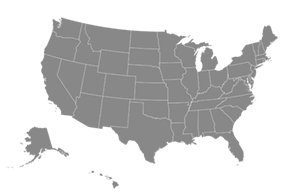


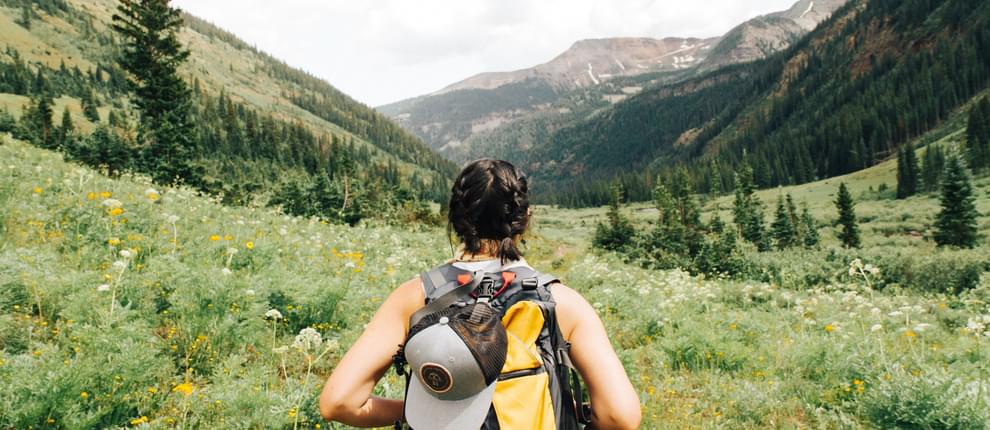

Subscribe to our mailing list for notifications on our latest trainings.
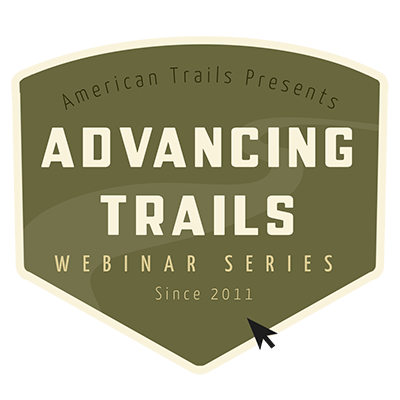
You will leave the webinar with a map that can help you identify priorities for your organization and areas where you need more support. This webinar is hosted by the Partnership for the National Trail System, the National Wilderness Stewardship Alliance, and American Trails.
Presented by:
** This event has passed **
Tuesday, November 05, 2019
11:00 AM to 12:00 PM (Pacific Time) {more time zones}
Cost (RECORDING):
FREE for membersNote:
Closed Captioning is available for this webinar.
Learning Credits are available for this webinar.
This webinar is free. Would you consider a donation to support this webinar?
JEDI (justice, equity, diversity, inclusion) can feel like the elephant in the room. It’s big. It’s heavy. It’s overwhelming. If you feel like you’ve been talking about JEDI but don’t know how to walk the talk, this webinar will help guide you to action. In this webinar we review a 4-Quadrant Approach to planning for JEDI in a way that allows you to take one bite at a time. We consider the universe of JEDI strategies (from partnerships to training to hiring to program and advocacy), and map these strategies out on a 4-quadrant framework that frames out internal and external strategies as well as individual and institutional strategies. We discuss this online framework (https://theavarnagroup.com/2015/12/09/the-quadrants-of-equity-inclusion-diversity-work/). You will leave the webinar with a map that can help you identify priorities for your organization and areas where you need more support.
This webinar is hosted by the Partnership for the National Trail System, the National Wilderness Stewardship Alliance, and American Trails.

American Trails is a certified provider and learning credits are offered for this webinar: AICP CM (1.0) and LA CES PDH (1.0). We can also offer generic certificates for anyone wishing to obtain CEUs.
Check out part one of the series, The What and Why of JEDI.
Nikki asks: Inclusion is a critical part in moving toward equitable engagement. Colonization is the core of the issue on public lands today and remains a contentious topic for many. While most can recognize that public lands were in fact taken and settled, in some ways colonization is still happening in non-dominant identity communities.
I wonder about how to deal with individuals and/or organizations who are interested in equity work but are actively, and unapologetically, colonizing individuals and cultures. I'm thinking specifically about religious organizations that go on missions to convert people. How can you bridge the gap to share insight on why and how that process is damaging and is also happening in less obvious ways?
Religious ideology and worldview are such core tenants of who people are and how they act. I see great opportunity to work with groups who are dedicated to helping others, though I wish they would allow for more diverse perspectives without colonizing ideologies.
Avarna response: Yes, learning about histories of colonialism and current colonialism is important, but to motivate people who are resistant to JEDI to learn, you have to specifically connect the dots for them on why JED is important (this was discussed in the first webinar). Once they’re bought in, then they can start learning about how they can unwittingly be complicit in the systems of oppression that continue to exclude and marginalize folks (including colonialism). It can be helpful to find other religious groups doing work that is in support of JEDI as an example of how religion can be a strong part of your JEDI work. Mennonites have had a long history of engaging in justice work and Creation Justice Ministries work on JEDI initiatives within the environmental field through a Christian lens.
Mike Passo asks: In developing programs at conferences, is it better to seek diverse presenters across the board (i.e. near 100% of underserved populations), or is it better to try and create a population of presenter that more accurately reflects the population of the US?
Avarna response: We always urge diversity on panels, which doesn’t mean the entire panel is comprised of people with marginalized identities. Having different identities and perspectives on a panel can contribute to a richer conversation. Your panelist should be equipped in speaking to issues of JEDI from multiple perspectives, even if the panel is not aimed to address JEDI specifically.
I would be curious what your take is on how to consider that so many of these issues and underserved or disadvantaged communities exist entirely on spectrum. Disability, ethnicity, social status, even gender. Exist on a spectrum, and the act of labeling can become very difficult. Any suggestions of how to deal with all of the grey areas caused by individuals falling on spectrums?
Avarna response: We know that people experience barriers differently based on their identities, so we always try to focus on the barrier versus the person. Because oppression is intersectional, i.e., peoples’ experiences are amplified if they hold more than one marginalized identity, we cannot apply a single person’s story to an entire community. But we can address the barriers that impact them.
Inviting diverse participation in my programs seem key, but I may know all of the communities to invite. Any ideas on how to try to ensure diverse invitations to participation.
David Willman asks: How do you know feedback is genuine? Are we to presume all feedback is valid?
Avarna response: We’re assuming feedback is coming with positive intent. If feedback addresses your behavior/actions and how they impact a person, feedback is always valid. If the feedback is just attacking character or intent, then it’s not as helpful. We also have to remember that the feedback we receive won’t be perfect; it’s our job to figure out what parts of the feedback we can really learn from and what parts may not make sense for us.
Sky Tallman states: I think in terms to Latinx are awkward, especially in a Spanish speaking context. The word can’t really be pronounced and doesn’t fit into Spanish grammar. The word can’t meaningfully be integrated into Spanish sentence without using articles. While I can appreciate the intention of non-Spanish speakers in using the term. It feels like a term that may, incidentally distance the speakers from the community being spoken about.
Avarna response: A few points we wanted to make here:
We just want to emphasize no community is a monolith and there continue to be debates within the Latinx community about the use of the term (primarily it has been a generational debate). But some of the assertions in this article are just plain wrong. Anecdotally, we have several friends and colleagues of Latinx descent (some multigenerational and some first generation or immigrants) who use the "x" to make many Spanish words gender neutral: like "amgixs."
It'll never be perfect, but we can always try to be better.
Francis asks: I identify as Filipinx and hence BIPOC, so I hope to make it to the next PGM ONE Summit in Chicago. How can our white allies and accomplices contribute to the conference though not being able to attend?
Avarna response: Supporting your attendance (financially) is one clear way white folks can contribute. You can find more information on www.pgmone.org on the FAQs page, or email [email protected] for information on how white allies/accomplices can contribute.
From Ava: It’s also important for white folks to understand that supporting PGM ONE is great, but also one very small slice of doing racial justice work. If people can’t contribute to PGM ONE specifically, that’s ok. What’s more important is a long term commitment to racial justice, which can happen in many ways. One thing that could happen for white folks is that while their BIPOC colleagues are at PGM ONE, white colleagues could intentionally carve out some time to read and discuss important articles/books/videos about racial justice.
Chelsea Conlin asks: Do you have recommendations for broaching JEDI topics with members to your organization that will likely feel threatened by them?
Avarna response: We approach JEDI as an opportunity (not a threat). We sometimes start by talking about implicit bias because we all have it and it’s not limited to one identity (we have race bias, but also have biases based on body size, age, class, education, gender, sexual orientation, and more). This can be disarming. Also talking about the more “business case” whys that we presented in the last webinar can help bring people along.
Rose Clements asks: What strategies would you suggest to engage our partners (NPS, Forest Service, etc) to be held accountable for JEDI?
Avarna response: We have supported organizations in adding JEDI values language to partnership agreements (including cooperative agreements) to ensure agency personnel involved in projects are bought into JEDI and behave inclusively (or attend trainings on cultural competency and implicit bias). We have also created codes of conduct, expectations, and partnership dissolution policies that hinge on partners supporting JEDI. Finally, some agencies have their own JEDI statements (sometimes called something different), but you can find those and build your cooperative agreement from the commitments that they’ve already made internally.
How can we create aspirational marketing without tokenizing folks?
Avarna response: Here are some tips to avoid tokenism:
Pamela Bianchi asks: How do you acknowledge conflicting feedback?
Avarna response: Be transparent that you have received conflicting feedback (to both feedback givers), and have a clear process to navigate how you’re going to integrate conflicting feedback.
Jessica Savage asks: You mentioned a lot of examples of marginalized flox, and I just wanted to ask if you would also include people of size, though you may have left out others, so I suppose it is not 100% necessary, but just wanted to throw that out there as feedback.
Avarna response: Yes, sizeism is a system of oppression that manifests in many ways in the trails space, from access to gear to hiker conduct. We always try to address sizeism but if we didn’t our apologies.
Deborah Jensen asks: Can you elaborate on working with tribes? In our organization we reach out for input via our tribal liaison in formal manner but rarely hear back. This leaves an important gap in our information and feedback.
Avarna response: There is no one-size fits all solution to tribal engagement. We have curated a number of resources on tribal engagement on this Google Drive folder: https://drive.google.com/drive/folders/1KUYgSdyhCoRlXm2z8Sl2pzN5sF4t96gR
Kyle Pows White has authored a few resources on tribal engagement. Bottom line is that the “best practices” for engagement have to be informed by the tribes with whom you’re working. If your tribal liaison isn’t responding, ask yourself what is keeping them from doing so (is it the way you’re communicating with them? Is it that the liaison doesn’t feel this partnership is reciprocal and therefore doesn’t feel obligated to respond?) Figure out what you can do to better support tribal sovereignty and tribal agendas and goals. And build relationships.
Ingrid Gatin asks: How would you address a patriarchal or paternalistic structure in your organization?
Avarna response: It is difficult to upend an organizational chart to make the dominant hierarchical organizational structure (leadership, directors, managers, program staff, etc.) more flat. I’d look into resources on power sharing (Adrienne Maree brown’s book Emergent Strategy has case studies of flat hierarchies) and cross-functional organizational structures such as a holocracy. Here are some basic tenets of power sharing, which is one theory of org management that gets away from patriarchal structures: https://www.fastcompany.com/3004867/why-sharing-power-work-very-best-way-build-it
Ashley Strobridge asked: The training was great, but we had some important feedback for you about some issues with it as well. I just wanted to address my main addition to the feedback, which was about People of Size. As you all stated in your answer to my question that you mentioned “sizeism” and I’d like to address that two ways:
1) I never heard you mention sizeism
2) The main issue I have with this is that even if you did mention it, sizeism is not the same as fat phobia. (I mentioned fat acceptance in the feedback form, but that is a positive, we need the negative here to make the equation make sence, which is fat phobia). Using the term “sizeism” with “fatphobia” is basically like using the term “All Lives Matter,” when it the term is “Black Lives Matter.” It’s equating the struggles of everyone with the clearly most severe struggles of the most marginalized group. Fat people receive the brunt of the marginalization and discrimination based on their size, at least when it comes to thinness vs fatness. It just occurred to me that actual Little People might be included in sizeism, so I suppose in that case, that term would be appropriate, but grouping People of Size with Little People really seems like equating apples with oranges, and an odd grouping, as the problems we face are very different. No one thinks that a Little Person is little because of a moral failing on their part, or a character flaw, whereas Fat People are judged in that way every day. It is the one marginalized group left that it seems to be socially acceptable to judge in this way, blaming them for the cause of their own marginalization, when in reality, a million things can cause fatness, from medical conditions, to medications that one has to take for medical conditions, to hormones, to genetics, or to just being naturally bigger. We shouldn’t have to justify this, but we always feel we need to. And that brings me to the glaring fact that: WE WERE NOT MEANT TO FIT INTO THE SAME BOX (Said in all caps for emphasis, not anger at you). In other words, Nature makes everything in a variety of sizes and shapes, why would humans be any different? Why should we all fit one narrow definition of size and shape? Humans come in different sizes and shapes, and the thing is? A Fat shape is more discriminated against than any other shape. We are constantly told we shouldn’t exist, from advertisements constantly bombarding us, and others who buy into the lie, that fat is evil and bad and something wrong with us to get rid of. Any other advertisements that blatant telling other marginalized bodies that their bodies are wrong and to be gotten rid of with such free discrimination? I suppose skin whitening cream, but we don’t see that here in the US, not nearly as much as dieting ads telling us to get rid of half of our bodies. There are definite subtle references through lack of representation, and I suppose I sound like I am trying to make it seem like we have it worse than everyone, which I really am not trying to say that, I’m just saying that we deserve to be represented among the other groups of marginalized peoples. And when it comes to comparing too small to too large, ever heard of someone not getting a job because they are too skinny? Maybe if the job is something physical, but other than that? Nope! But this happens to People of Size all the time (addressing my above point before I began this epic ramble). Fat people die daily from not getting the medical care we need because the medical industry is determined that they must treat our fatness before any other medical condition we may have, whether that other condition, what we actually came to them to get treated, is life threatening or not. The medical industry is convinced that our whole community is an “epidemic.” But we are just people. And there is nothing wrong with us. You can weigh 350 pounds and be a perfectly healthy human, in fact, you are more likely to have health issues from being underweight than being “obese” (which is a made up term based on the debunked BMI measurement that makes no sense). My point here is, our community also faces death due to discrimination and ignorance, and through no fault of our own. Our community also faces lack of employment due to the way we look, and our community is not physically welcome in many spaces due to the way the whole world is built for smaller bodies than ours (we cannot fit into restaurant seats, waiting room seats, public toilets, etc.). The world seems to think that only certain sizes are acceptable, and society’s built environment reflects this. So I’m just trying to say that perhaps doing some research and following some fat activists on social media would behoove you all. Your Fat Friend is a good one on Twitter. See below for more.
So yeah, I think there are some major issues here that need to be addressed, especially given that the outdoors is a major space where People of Size are still not welcome. Please look into following on Facebook, Fat Girls Hiking. Summer, the woman who runs that page, and the national group, has some very important things to say about People of Size on trails. It would benefit you all to take a look. Fat People can be just as active and outdoorsy as Straight-Sized people, so making sure that your outreach, advertisements, trails, etc. are accessible to POS is also important. Fat Gal Yoga is another good Facebook/Instagram to follow. (Both Fat Girls Hiking Group and Big Gal Yoga are accessible to all genders, ethnicities, abilities, etc., though the names sound less than that). There’s a lot more to this and about making spaces that are welcoming to People of Size.
Avarna response: First and foremost, thank you for sharing your feedback, ideas, and the resources. I hear your overall sentiment that we should have talked more explicitly about fat phobia in our webinars and that feedback will inform our work as we move forward. I wanted to share a little bit about how we think about sizeism and fat phobia - we think about sizeism as a belief system and set of practices that privilege those with straight sized bodies and marginalize those with fat bodies, big bodies, small bodies - really any body outside of the norm. To us, fat phobia fits into sizeism as one of many manifestations of sizeism (as you mentioned other forms of sizeism exist that are not related to fat phobia). Similarly, we think about racism as a belief system and set of practices that uphold the supremacy of white folks and marginalize black, indigenous, and people of color. And then things like anti-blackness are manifestations of racism. Anyways, I'm sharing this mostly because I think we're more on the same page about fat phobia than originally thought, but we use different words. With that said, I take your point that specifically naming fat phobia is important and that's feedback we take seriously. And finally, for anyone else on this thread who wants some more outdoorsy folks who are talking about fat phobia, I've learned a ton from Jenny Bruso, Sam Mortiz, and following the hashtag #fatandoutdoorsy.
Ava Holliday, Founding Partner, The Avarna Group
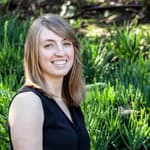
Ava believes a more sustainable future is dependent on simultaneously working towards social and environmental justice. She has devoted the last six years to researching and working in this field. Currently a Ph. D. candidate at the University of Washington in the department of Anthropology, Ava has designed and implemented a research project that investigates diversity and inclusion efforts in American environmentalism and has designed and taught several of her own university level courses covering topics such as power, identity, environmentalism, health, and wilderness. Beyond her academic life, Ava puts her knowledge into practice by working as an outdoor educator. Most recently, Ava served as a lead advisor and facilitator at the LGBTQ Outdoor Summit.
Aparna Rajagopal-Durbin, Founding Partner, The Avarna Group
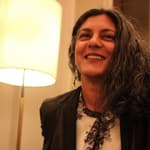
Aparna is a former natural resources and business litigator who has devoted the last seven years to helping outdoor and environmental organizations attract and engage a diverse and inclusive base of people and cultivate inclusive cultures. Aparna has facilitated workshops on inclusion, equity, cultural competence, cultural relevancy, and implicit bias for over thousands of outdoor educators, nonprofit leaders, outdoor industry professionals, land managers, conservation grantors, and conservationists. She has also spearheaded projects that encourage public dialogue about diversity and inclusion in the outdoors, including Expedition Denali: Inspiring Diversity in the Outdoors. Most recently, Aparna co-founded and has served as director for the People of the Global Majority in the Outdoors, Nature, and the Environment Summit.
We are offering closed captioning for our webinars, thanks to a partnership with VZP Digital. If you are in need of this service, please email us prior to the webinar. An unedited transcript will be sent to all attendees following the webinar.
American Trails is proud to be a certified provider of the following learning credits and continuing education opportunities:
Learning credits are free for attendees for American Trails webinars and the International Trails Symposium, as well as for other conferences, webinars, and workshops we offer credits for. Learn more here.
While we may individually agree (or disagree) in whole or in part with any or all of the participants, the views expressed in these webinars are not necessarily representative of the views of American Trails as an organization or its board and staff. Unless specific situations are noted by presenters, nothing in American Trails webinars should be considered to be interpreted as a standard.
By registering for our webinars, you submit your information to the webinar organizer and associated presenters and sponsors, who may use it to communicate with you regarding this event and their other services. Your organization may also be added to the American Trails Business Directory. You can easily cancel your registration at any time.
3,532 views • posted 05/16/2019
